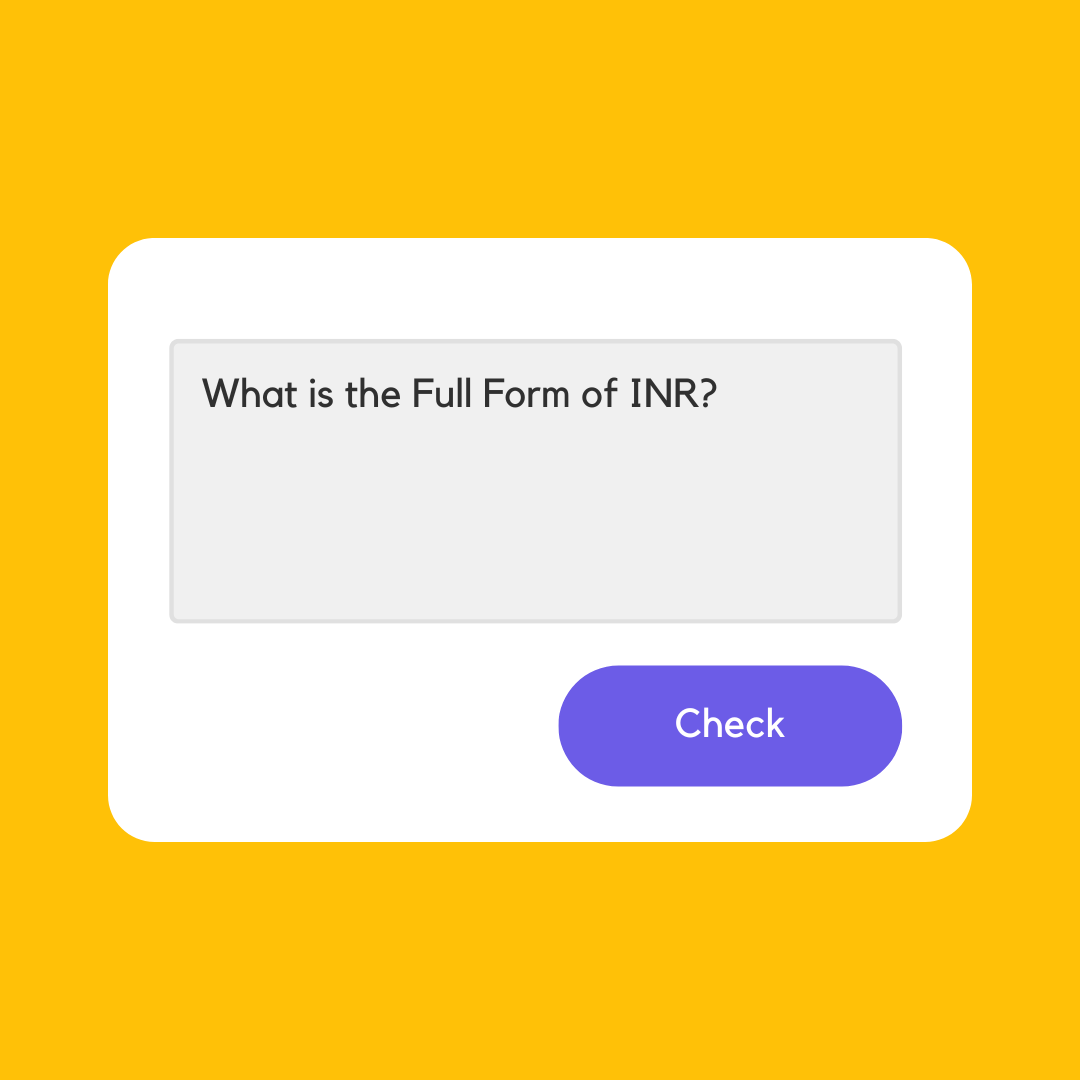Currencies are unique indicators of economic identity within the maze of acronyms that characterize our multicultural world. In the middle of this patchwork of language, the abbreviation “INR” has a special meaning in the Indian subcontinent. This blog asks you to look deeper at the complex meanings behind the term “INR,” going beyond simple definitions.
We go beyond the full form of INR as a currency code to explore its complex, complete form, move through its several categories, and expose the advanced security mechanisms that serve as the cornerstone of its integrity. We delve deeper by unravelling the true nature of INR as evidence of the Indian Rupee’s cultural diversity and economic tenacity.
What is the Full Form of INR?
INR, or “Indian Rupee,” is a short but meaningful economic acronym. The Indian Rupee, the country’s official currency, is an essential component of the country’s economy. The whole form depicts a unit with historical, cultural, and economic significance in addition to being a language convention. Understanding INR’s complete form is essential to appreciating its broader sense in the financial domain.
Categories of INR:-
Although the INR abbreviation is most commonly linked to the Indian Rupee, it also has a significant impact in the medical field, where it has an entirely different connotation. Within the field of medicine, INR is commonly referred to as the “International Normalized Ratio.” This measure is essential for evaluating blood clotting time, especially in patients receiving anticoagulant medication. INR’s dual classification highlights its adaptability, flowing between two domains with different applications and effects.
Security Aspect of INR:-
The adoption and reliability of a currency largely depend on its security level. The Indian Rupee has many cutting-edge security mechanisms to bolster its resilience against the growing wave of counterfeit transactions. The Reserve Bank of India (RBI), the nation’s highest monetary authority, painstakingly incorporates these characteristics into the banknotes. Some security measures include watermarks, security threads, microprinting, and other cutting-edge components that are intended to be aesthetically pleasing and technologically resilient.
A visual proof of authenticity is provided by employing watermarks, which are frequently complex designs inserted into the paper during manufacturing. The banknotes are made more difficult to duplicate by the insertion of security threads, some of which are metallic. Microprinting is another technique that aids in the fight against counterfeiting. It involves adding minute text or intricate patterns that are challenging to replicate.
The dynamic nature of the challenge given by counterfeiters is reflected in the constant evolution of security features. Technology is advancing, and with it are the strategies used by those who wish to compromise the value of a country’s money. To stay ahead of potential dangers, the Reserve Bank of India, working with various partners, is constantly adopting cutting-edge security measures.
Conclusion – INR full form in India
The abbreviation INR represents the money that drives the Indian economy and is an essential medical parameter. Its dual classification highlights how acronyms can be used in various settings and professions. The Indian Rupee’s robust security measures highlight the country’s dedication to upholding authenticity and confidence in financial transactions. Knowing the complete form of INR opens the door to a greater understanding of its complex existence and its influence on the healthcare and economic landscapes as we navigate the complex web of acronyms.
FAQs
1. What currency does INR represent?
Ans– INR stands for Indian Rupee, the official currency of the Republic of India.
2. Where is INR used?
Ans– INR is primarily used in India, but it is also accepted in some neighboring countries like Bhutan and Nepal. Additionally, some Indian communities abroad may use INR for transactions within their community.
3. What are the denominations of INR?
Ans– INR is available in both coins and banknotes:
Coins: 1, 2, 5, 10, 20, 50 paise, and ₹1, ₹2, ₹5, ₹10, ₹20.
Banknotes: ₹5, ₹10, ₹20, ₹50, ₹100, ₹200, ₹500, ₹2000.
4. What is the exchange rate of INR to other currencies?
Ans– The exchange rate of INR fluctuates daily against other currencies. As of today, October 26, 2023, here are some approximate exchange rates:
- 1 USD = ₹82.62
- 1 EUR = ₹88.24
- 1 GBP = ₹94.30
- 1 AUD = ₹55.44
- 1 CAD = ₹62.14
It’s important to note that these are just estimations, and the actual exchange rate may vary depending on the time of day, the currency exchange platform, and other factors.
